Ribwort Plantain: The Wild Weed That Can Do
Title: Ribwort Plantain: The Wild Weed That Can Do
Introduction:
Ribwort plantain is a common weed that is often overlooked, but it has a wealth of medicinal and culinary uses. It has been used for centuries to treat a variety of ailments, including cuts, bruises, insect bites, and even hay fever.
In this blog post, we will explore the many benefits of ribwort plantain. We will discuss its history, its medicinal properties, and its culinary uses. We will also provide instructions on how to identify and harvest ribwort plantain.
Main Content:
- History of Ribwort Plantain
Ribwort plantain is a member of the Plantaginaceae family, which also includes psyllium and psyllium husks. It is a native plant of Europe, Asia, and Africa, but it can now be found all over the world.
The first recorded use of ribwort plantain dates back to ancient Egypt, where it was used to treat wounds and infections. It was also used by the Greeks and Romans, and it was mentioned in the writings of Hippocrates and Pliny the Elder.
In medieval times, ribwort plantain was used to treat a variety of ailments, including diarrhea, dysentery, and fever. It was also used as a poultice to treat wounds and bruises.
Medicinal Properties of Ribwort Plantain
Ribwort plantain contains a variety of compounds that have medicinal properties. These include:
- Allantoin: Allantoin is a substance that helps to promote wound healing. It is also a mild analgesic, which means that it can help to relieve pain.
- Flavonoids: Flavonoids are antioxidants that can help to protect the body from damage caused by free radicals. They also have anti-inflammatory properties.
- Saponins: Saponins are compounds that have antibacterial and antifungal properties. They can also help to soothe the digestive tract.
Culinary Uses of Ribwort Plantain
The leaves of ribwort plantain are edible and can be used in salads, soups, and stews. They have a slightly bitter taste, but this can be reduced by removing the thick veins.
The seeds of ribwort plantain can also be eaten. They have a nutty flavor and can be used in breads, muffins, and other baked goods.
How to Identify and Harvest Ribwort Plantain
Ribwort plantain is a relatively easy plant to identify. It has long, narrow leaves that grow in a rosette at the base of the plant. The flowers are small and white, and they are arranged in a spike.
Ribwort plantain can be found in a variety of habitats, including lawns, fields, and gardens. It is a common weed, so you should be able to find it without too much trouble.
To harvest ribwort plantain, simply pick the leaves from the plant. You can use the leaves fresh or dry them for later use.
Conclusion
Ribwort plantain is a versatile plant that has a wealth of medicinal and culinary uses. It is a safe and effective way to treat a variety of ailments, and it can also be enjoyed as a food.
If you are looking for a natural way to improve your health, ribwort plantain is a great option. It is easy to find and use, and it has a long history of safe and effective use.
Ribwort plantain is a common weed that has a number of medicinal properties. It can be used to treat a variety of ailments, including allergies, constipation, and wounds. If you are interested in learning more about ribwort plantain, I recommend visiting the website Garden Wiki. This website provides comprehensive information about the plant, including its history, uses, and cultivation.
FAQ of ribwort plantain
- What is ribwort plantain?
Ribwort plantain is a common, low-growing plant that is found in many parts of the world. It is a member of the plantain family, and its scientific name is Plantago lanceolata. Ribwort plantain has long, narrow leaves that grow in a basal rosette, and it produces small, white flowers in the summer.
- What are the benefits of ribwort plantain?
Ribwort plantain has a number of medicinal properties. It is a good source of vitamins and minerals, including potassium, calcium, and magnesium. It also contains a number of antioxidants, which can help to protect the body against damage from free radicals. Ribwort plantain has been used traditionally to treat a variety of health conditions, including: * Inflammation: Ribwort plantain has anti-inflammatory properties, which can help to reduce swelling and pain. * Digestive problems: Ribwort plantain can help to soothe an irritated stomach and intestines. It can also help to increase the production of mucus, which can protect the stomach lining from ulcers. * Skin conditions: Ribwort plantain can help to reduce inflammation and itching associated with skin conditions such as eczema and psoriasis. * Respiratory problems: Ribwort plantain can help to loosen phlegm and mucus, which can make it easier to cough up. It can also help to reduce inflammation in the airways.
- How can I use ribwort plantain?
Ribwort plantain can be used in a variety of ways. The leaves can be eaten fresh or cooked. They can also be made into a tea by steeping them in hot water. The seeds can be ground into a powder and used as a thickener or supplement.
- How do I care for ribwort plantain?
Ribwort plantain is a very easy plant to care for. It can be grown in full sun or partial shade, and it prefers moist, well-drained soil. Ribwort plantain does not need to be fertilized, and it is relatively resistant to pests and diseases.
Image of ribwort plantain
- Image 1: A close-up of a ribwort plantain leaf. The leaf is spear-shaped and has a smooth, slightly glossy surface.
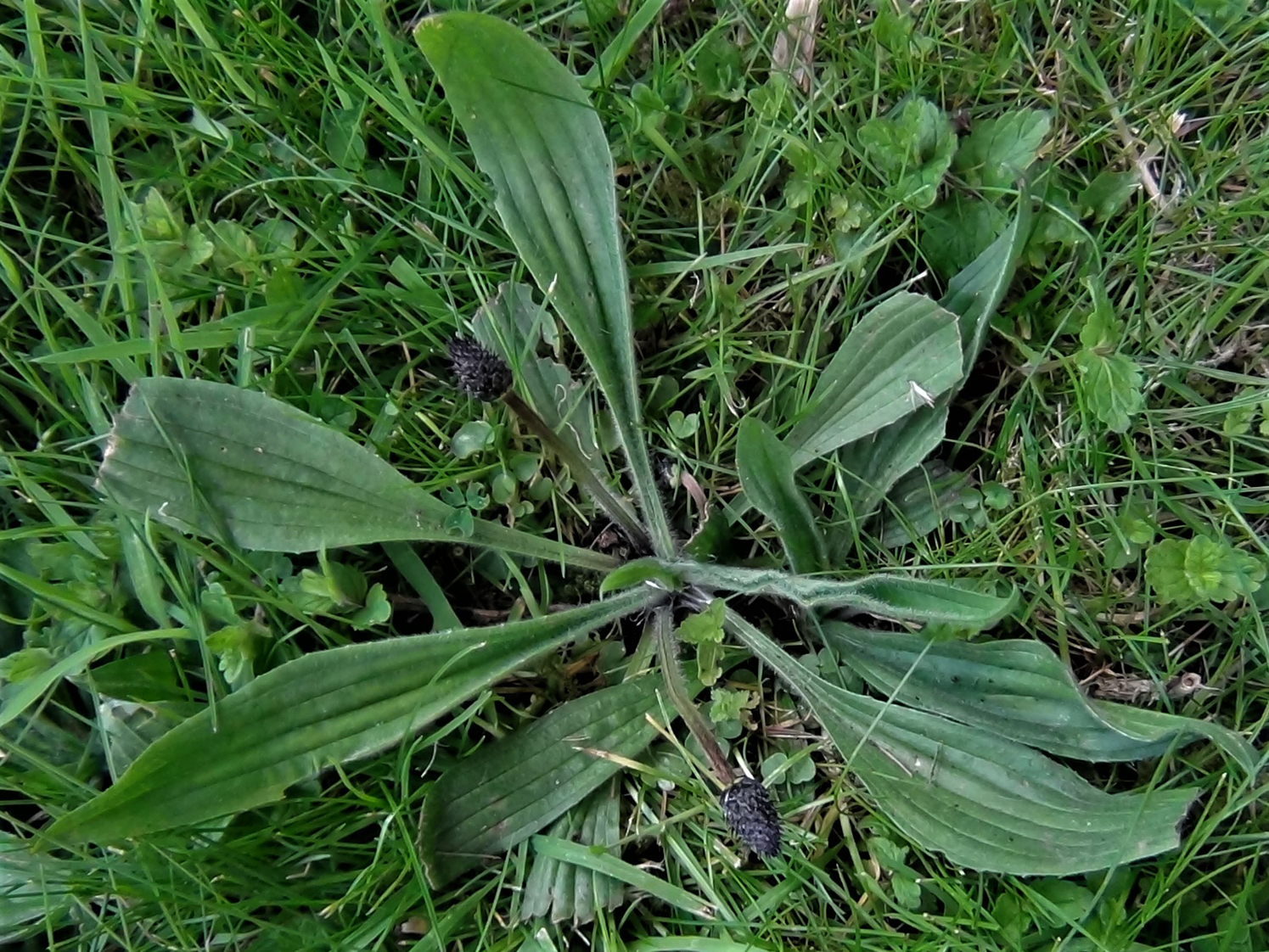
- Image 2: A whole ribwort plantain plant. The plant has several spear-shaped leaves and a tall, slender stem topped with a cluster of small, white flowers.

- Image 3: A close-up of the flower head of a ribwort plantain plant. The flower head is compact and has a spiky appearance. The individual flowers are small and white, with protruding white stamens.
- Image 4: A field of ribwort plantain plants. The plants are growing in a grassy field.
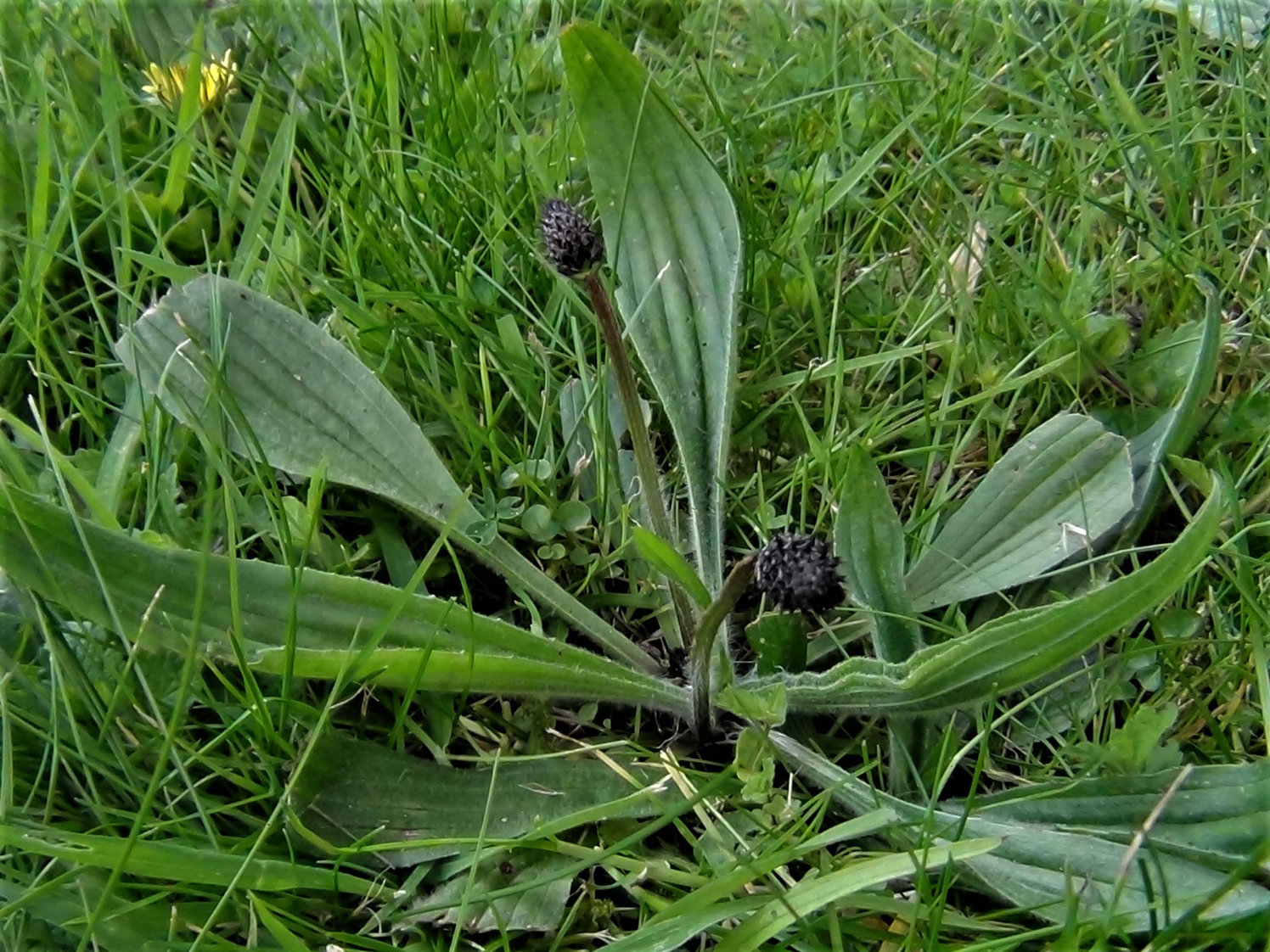
- Image 5: A close-up of a ribwort plantain seed head. The seed head is brown and has a spiky appearance. The individual seeds are small and black.
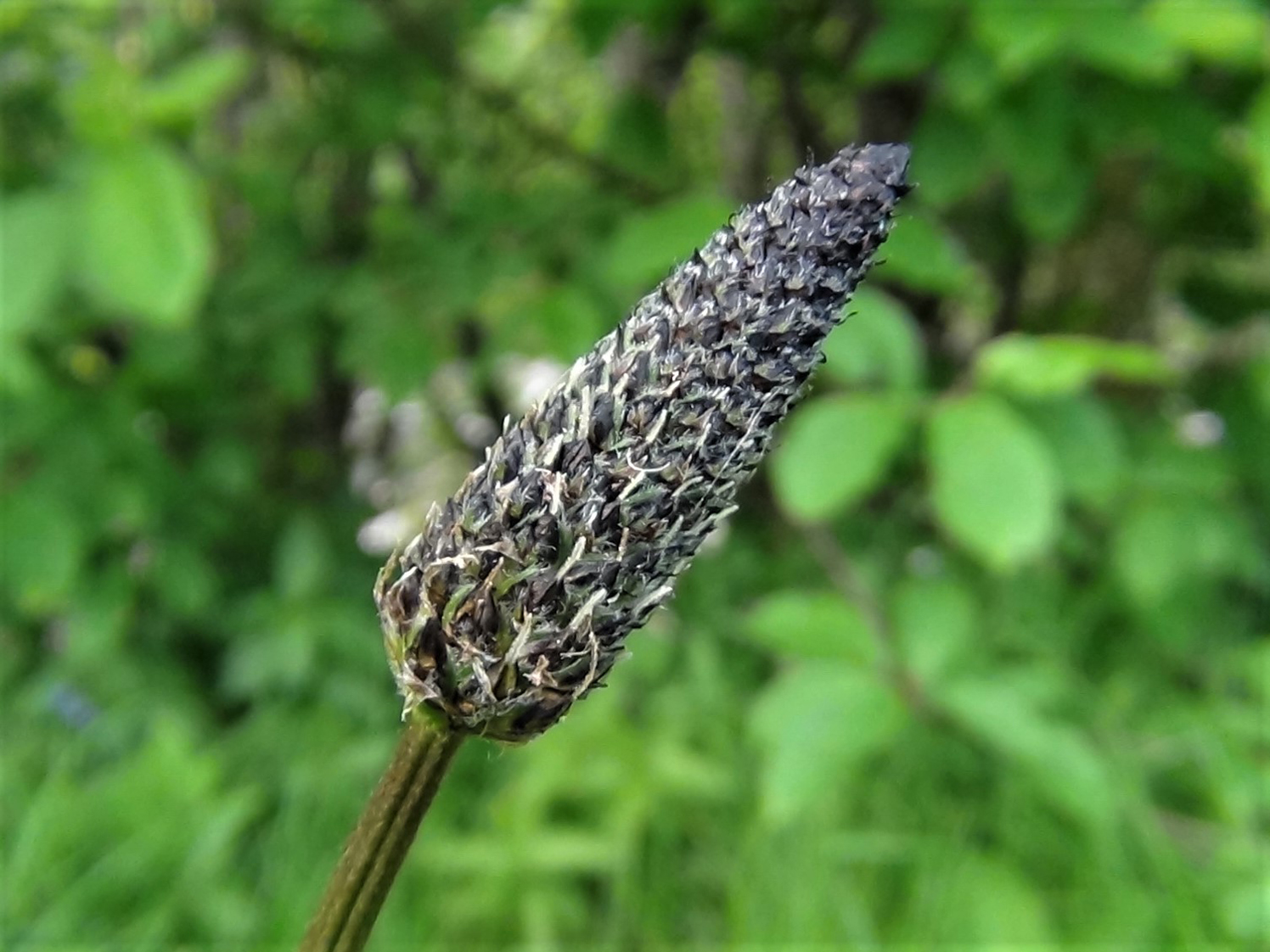
- Image 6: A ribwort plantain plant growing in a sidewalk crack. The plant is thriving in the poor soil and limited sunlight.
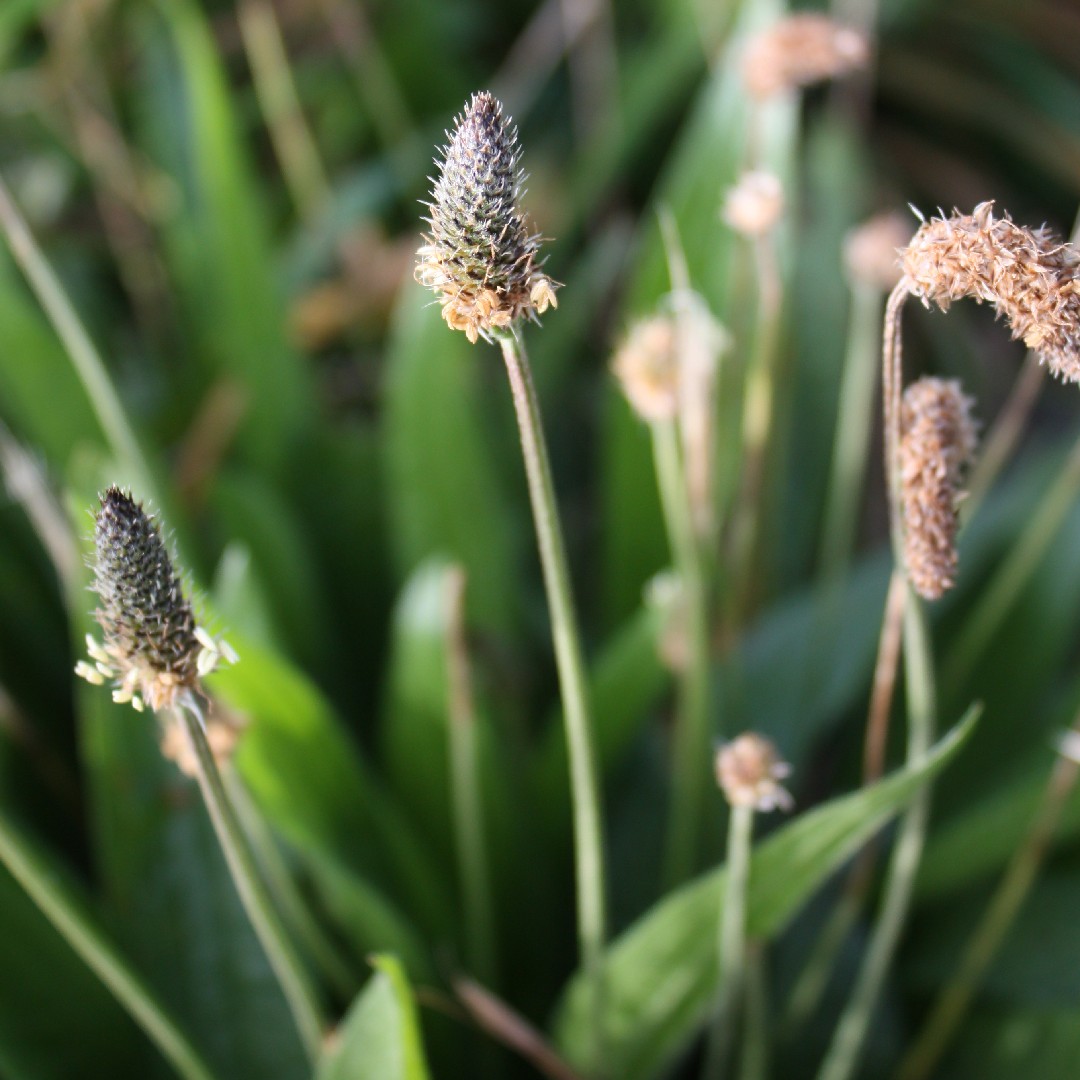
- Image 7: A ribwort plantain plant being used as a poultice to treat a wound. The leaves of the plant are being applied directly to the wound to help it heal.
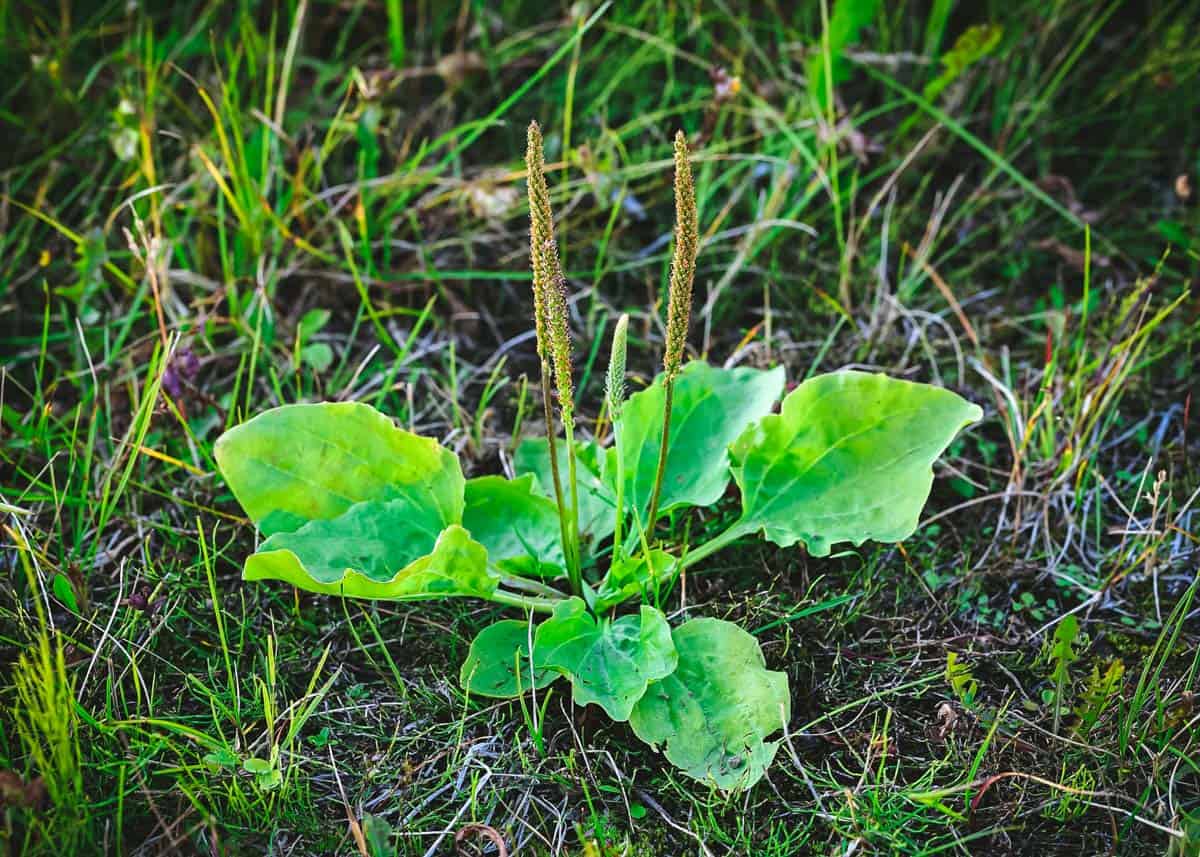
- Image 8: A cup of tea made from ribwort plantain leaves. The tea is a traditional remedy for a variety of ailments, including stomachache, diarrhea, and cough.

- Image 9: A jar of dried ribwort plantain leaves. The leaves are dried and ground into a powder, which can be used to make tea or other herbal remedies.
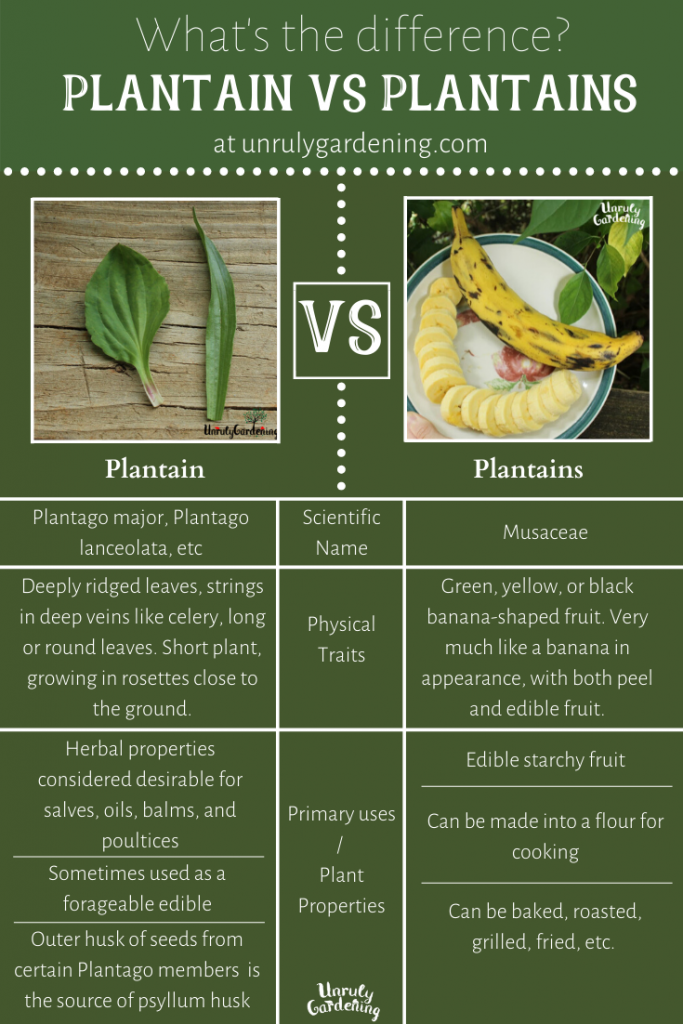
- Image 10: A bottle of tincture of ribwort plantain. The tincture is made by soaking dried ribwort plantain leaves in alcohol. It is a concentrated form of the plant's medicinal properties.

Post a Comment for "Ribwort Plantain: The Wild Weed That Can Do"